- Home
- Nathaniel Hawthorne
Selected Tales and Sketches
Selected Tales and Sketches Read online
Table of Contents
Title Page
Copyright Page
Introduction
The Hollow of the Three Hills
Sir William Phips
Mrs. Hutchinson
The Wives of the Dead
My Kinsman, Major Molineux
Roger Malvin’s Burial
Passages from a Relinquished Work
Mr. Higginbotham’s Catastrophe
The Haunted Mind
Alice Doane’s Appeal
The Gray Champion
Young Goodman Brown
Wakefield
The Notch of the White Mountains
The Ambitious Guest
The May-Pole of Merry Mount
The Minister’s Black Veil - A PARABLE
Sunday at Home
The Man of Adamant - AN APOLOGUE
Endicott and the Red Cross
Night Sketches
Edward Randolph’s Portrait - FROM LEGENDS OF THE PROVINCE-HOUSE
The Hall of Fantasy
The Birth-mark
Egotism; or, The Bosom-Serpent - FROM THE UNPUBLISHED “ALLEGORIES OF THE HEART”
The Christmas Banquet - FROM THE UNPUBLISHED “ALLEGORIES OF THE HEART”
The Celestial Rail-road
Earth’s Holocaust
The Artist of the Beautiful
Rappaccini’s Daughter - FROM THE WRITINGS OF AUBÉPINE
Ethan Brand - A CHAPTER FROM AN ABORTIVE ROMANCE
Suggestions for Further Reading
HAWTHORNE: SELECTED TALES AND SKETCHES
Nathaniel Hawthorne (1804-1864) was born in Salem, Massachusetts, where, after his graduation from Bowdoin College in Maine, he wrote the bulk of his masterful tales of American colonial history, many of which were collected in his Twice-told Tales (1837). In 1839 and 1840 Hawthorne worked in the Boston Customs House, then spent most of 1841 at the experimental community of Brook Farm. After his marriage to Sophia Peabody, he settled in the “Old Manse” in Concord; there, between 1842 and 1845, he wrote most of the other tales in this volume, first gathered in a collection entitled Mosses from an Old Manse (1846). His career as a novelist began with The Scarlet Letter (1850), whose famous preface recalls his 1846-1849 service in “The Custom-House” of Salem. The House of the Seven Gables (1851) and The Blithedale Romance (1852) followed in rapid succession. After a third political appointment—this time as American Consul in Liverpool, England, from 1853 to 1857—Hawthorne’s life was marked by the publication of The Marble Faun (1860) but also by a sad inability to complete several more long romances. Ill health, apparently, and possibly some failure of literary faith finally eroded Hawthorne’s striking ability to make imaginative sense of America’s distinctive moral experience.
Michael J. Colacurcio is the author of The Province of Piety: Moral History in Hawthorne’s Early Tales and of various essays and reviews in the field of American literature. He has also edited and contributed to a volume of New Essays on The Scarlet Letter. He is currently Professor of English and American Studies at UCLA.
PENGUIN BOOKS
Published by the Penguin Group
Penguin Group (USA) Inc., 375 Hudson Street, New York, New York 10014, U.S.A.
Penguin Group (Canada), 90 Eglinton Avenue East, Suite 700, Toronto, Ontario,
Canada M4P 2Y3 (a division of Pearson Penguin Canada Inc.)
Penguin Books Ltd, 80 Strand, London WC2R ORL, England
Penguin Ireland, 25 St Stephen’s Green, Dublin 2, Ireland (a division of Penguin Books Ltd)
Penguin Group (Australia), 250 Camberwell Road, Camberwell, Victoria 3124, Australia
(a division of Pearson Australia Group Pry Ltd)
Penguin Books India Pvt Ltd, 11 Community Centre, Panchsheel Park,
New Delhi - 110 017, India
Penguin Group (NZ), 67 Apollo Drive, Rosedale, North Shore 0632, New Zealand
(a division of Pearson New Zealand Ltd)
Penguin Books (South Africa) (Pty) Ltd, 24 Sturdee Avenue, Rosebank,
Johannesburg 2196, South Africa
Penguin Books Ltd, Registered Offices: 80 Strand, London WC2R ORL, England
First published in the United States of America by Penguin Books 1987
Published simultaneously in Canada
Introduction and compilation copyright © Viking Penguin Inc., 1987
All rights reserved
The text of the stories in this collection is that established by the Centenary
Edition of the Works of Nathaniel Hawthorne published by the Ohio State University
Center for Textual Studies and Ohio State University Press. The selections are
from the volumes entitled Twice-Told Tales, Mosses from an Old Manse, The Snow-Image
and Uncollected Tales, and Miscellany. Copyright © Ohio State University
Press, 1974, 1987. All rights reserved.
Acknowledgment is made to The Library of America for their assistance in the
production of this book.
LIBRARY OF CONGRESS CATALOGING-IN-PUBLICATION DATA
Hawthorne, Nathaniel, 1804-1864.
Selected tales and sketches.
(Penguin classics)
Bibliography: p.
I. Colacurcio, Michael J. II. Title.
PS1852.C’.3 86-21247
eISBN : 978-1-101-07780-1
3
The scanning, uploading and distribution of this book via the Internet or via any
other means without the permission of the publisher is illegal and punishable by law.
Please purchase only authorized electronic editions, and do not participate in or encourage
electronic piracy of copyrighted materials. Your support of the author’s rights is appreciated.
http://us.penguingroup.com
Introduction
When Hawthorne recollected, in the often quoted Preface to the third edition of his Twice-told Tales (1851), that he had once found himself “the obscurest man of letters in America,” he was speaking of a phase of his career that had long since lapsed. The Scarlet Letter (1850) had not yet had time to establish itself as the classic we now universally recognize—that miracle of meditation which transcends provincial origin and subject matter to become a standard of World Literature; but it was already a significant critical and popular success. The House of the Seven Gables ( 1851), which Hawthorne himself in some moods preferred to The Scarlet Letter, would further secure his reputation. And by the time The Blithedale Romance (1852) was making its way among reviewers and booksellers, a somewhat envious Herman Melville could write his recently estranged friend that “this name of ‘Hawthorne’ seems to be ubiquitous.”
But if these three extended fictions—the “American Romances,” as Henry James would name them in his critical biography of 1879—established Hawthorne in that rich and catholic world we treasure as “fiction in English,” and also at the center of an ongoing critical debate we recognize as “novel versus romance,” it remains true that those shorter fictions Hawthorne produced in the decades prior to 1850 amount to far more than a long foreground to worldly success. Indeed the total achievement of his earlier tales and sketches is so remarkable that Hawthorne would merit a place in the first rank of American authors even if he had written none of his longer works. Nor would the literature of any modern nation-state be anything but significantly enhanced if Nathaniel Hawthorne had happened to be born there and to have subjected its peculiar moral history to his unique style of fictional analysis.
Yet Hawthorne remains emphatically an American writer—self-consciously then and distinctively now. Most obviously: as no one escapes the pressures of history, so this notable descendant of
the American Puritans could scarcely have eluded all trace of their conscientious and symbolic manner of taking the world. More significantly, his American-ness reveals itself in terms he consciously learned, by immersing himself, at the outset of his career, in the whole sequence of colonial and provincial texts which inevitably express the Puritan Mind and arguably control American Identity.
That is to say, Hawthorne did not merely inherit his status or assume his function as an “American” author; rather, he studied to recreate and meditated to judge the special quality of moral experience in his native land. More incisively than any writer of his generation, he placed the moral argument both for and against Calvinism. Further, he had the critical intelligence to discern how much of the familiar politics of mission and destiny was but the public face of a piety that flourished in America distinctively. And eventually, especially in the 1840s, he acquired the perspective to notice how much of the morale of his own generation of intellectuals was suitably understood as neo-Puritan, despite their vigorous rejection of the theological idioms of the older orthodoxy. The continuities are clear and strong enough to suggest that, after he had written out his account of the Puritan conscience, he deliberately turned to something like a moral history of his own times. Thus even Hawthorne’s more contemporaneous tales maintain a firm sense of involvement in a reality that is both concrete and continuous.
From this observation it follows that the enduring, even dazzling achievement of Hawthorne’s early fiction is not sufficiently appreciated in the terms modern readers find readiest to hand: not in that formalism which regards literary meaning as utterly internal to the work itself; and not even in those systems of psychoanalytic analysis which help us find, in literature as elsewhere, some structure deep enough to inform all possible experience of the world. For, contrary to the implication of both these famous critical schemes, the typical Hawthorne tale appears to insist that we cannot get along without historical reference. Not thematically, of course, as the tales frequently set out to judge the import of experiences that have been altogether real and definite. And not even formally—should we find ourselves insisting on that once proud distinction—for the reality of history usually introduces, quite deliberately, some contrary or discordant element into the otherwise smooth and plausible rhetoric of the Hawthorne tale itself. As history in Hawthorne usually signals irony, so we often find an entire reordering of values is triggered by some local but altogether strategic reference or allusion.
This is not to say, of course, that some subtle “historicism” may serve as our only system of critical notice. No one should fail to observe that Hawthorne’s plots are often crafted for exquisite swiftness and precision of impact; or that his patterns of sight and sound are arranged with an artist’s sense of repetition and difference. And only the studiedly naive will resist the intimations of psychic complexity that lurk (even unconsciously) behind his most innocent-looking image or symbol. Yet the reader is also invited to pursue, with equal vigor and tact, the significance of allusions that seem to incorporate history into the imaginative world of the fiction. It might be too much to claim that we must always begin or end with such references. Yet it may be fair to suggest that Hawthorne fully emerges from his early obscurity only when the reader is determined to trace his art back to the real-life sources in the history that sustained it.
None of the works we might think to identify as Hawthorne’s first significant literary production provides a full introduction to the precise historical demands we have been anticipating. His project of “moral history” begins quite early, but it does not appear to have been entirely aboriginal; and that fact seems always to have been part of our critical problem. Accustomed to identify moral “origin” with artistic “epitome,” we have rarely thought to look for swift and significant historical development.
Fanshawe, a brief, seriocomic novel of sexual intrigue which Hawthorne managed to publish in 1828, is explicitly set in the previous century—in and about a “seminary of learning” located in a “retired corner of one of the New England states”—but its affinities are with literary traditions hardly to be identified with what Hawthorne’s contemporaries specifically defined as “the matter of America.” Scholars have patiently identified the influence of Sir Walter Scott, and of the so-called gothic and domestic or sentimental schools of English fiction; and though critics once claimed that this work predicted all that was really essential in Hawthorne’s moral vision, no one has ever tried to link it very directly with the short fictions Hawthorne was also writing (and trying to collect) in the years immediately after his graduation from Bowdoin College in 1825. Indeed it now seems something of an embarrassment; not a false start, exactly, which the author subsequently tried to recall, as was once believed; but more like a bid to get something published, anonymously; something which lightly mocked even as it traded on the most popular of readerly expectations.
The case of the first of Hawthorne’s several projected collections of brief tales is somewhat more complicated and suggestive, though even here the argument for the author’s deep involvement in moral history, or in a fully studied art of allusion, would look a little premature. The title of the proposed collection, “Seven Tales of My Native Land,” clearly suggests some patriotic motive, as does the prior fact of Hawthorne’s membership in the more “nativist” of the two literary societies (the “Athenean”) in existence at Bowdoin in the 1820s. Apparently Hawthorne began his career as a literary professional in substantial agreement with the widespread (though by no means universal) sentiment in favor of an American literature that should aspire to eventual greatness not formally, by imitating the established genres of British literature, but materially, by emphasizing those experiences that had distinguished American experience from all others. As earlier generations of independent-minded Americans had urged their constituents to “buy homespun,” so American writers of the early nineteenth century were repeatedly urged to “use American materials.” And we can easily imagine the author of the “Seven Tales” trying—in the words of one of Hawthorne’s later, more ironic narrators—“to deserve well of [his] country by snatching from oblivion some else unheard-of fact of history.”
Yet the literary image of the “Seven Tales” is blurred indeed. Part of the problem, quite simply, is that we cannot be sure of its precise table of contents, especially as this cardinal uncertainty is linked to some fairly strong evidence that a discouraged Hawthorne may have destroyed the majority of the tales intended for this first projected but never actually published collection. Well after Hawthorne’s death (in 1864), his sister Elizabeth remembered reading, in the summer of 1825, a gathering of tales whose subjects she named as “witchcraft” and “the sea”; but she could mention only a couple of titles. One of these she referred to as “Alice Doane,” and most scholars infer that “Alice Doane’s Appeal” (1834)—whose clearly fictionalized narrator refers to the tale within his tale as one that chanced to survive some general literary conflagration—is in fact a dramatized redaction of one of Hawthorne’s original “Seven.” Beyond this one quasi-fact, however, most of the conditions surrounding Hawthorne’s earliest attempts to market his tales remain indeed obscure.
“The Hollow of the Three Hills” (1830), which is surely about witchcraft in some sense, may quite possibly be a survivor from Hawthorne’s first attempt at self-collection. So may be “The Wives of the Dead” (1832), whose setting and action at least partially invoke the sea. Nor is it entirely fanciful to suppose that “An Old Woman’s Tale” (1830)-not included in this collection—might have been designed to serve as a sort of frame for some series or other; most suggestively, it identifies its source as the “strangely jumbled” memory of a cronelike old woman whose tale-telling habits have left “a thousand of her traditions lurking in the corners and by-places of [the narrator‘s] mind.” All we can say with any certainty, however, is that the Hawthorne who returned in the summer of 1825 from Bowdoin College in Brunswick, Maine, to his na
tive place of Salem, Massachusetts, had a mind to publish a collection of tales that subscribed, at least nominally, to the nativist literary program; and that he grew frustrated and even a little angry when he gradually inferred, by 1827, that publishers were not eager to publish his collection as such.
Yet it may be worth pausing a moment to consider the precise quality of Hawthorne’s earliest published tale of his native land. For the temptation has been strong to identify “The Hollow of the Three Hills” as indeed a first; to decide that its subject recalls the infamous matter of the Salem Witchcraft, in which one of Hawthorne’s remote ancestors had been deeply involved (as a surveillant but none too judicious magistrate); and to conclude with satisfaction and in haste that Hawthorne found his true “Hawthornean” métier almost immediately. The problem with this view is that it tends to establish a rather simplistic model of both the motive and the style of Hawthorne’s involvement in history: gloomy ancestral wrong elaborated in a basically gothic manner. And while this account may almost serve for “The Hollow,” it definitely reduces the complexity of tales like “Alice Doane’s Appeal” and “Young Goodman Brown,” in which Hawthorne’s recreation of the past is much more than merely associative or tonal.
Anticipating just a bit, perhaps, the reader should notice that many features of “The Hollow of the Three Hills” are relatively conventional. The unspecified gloom of its setting amid “strange old times, when fantastic reveries were realized among the actual circumstances of life” contrasts quite noticeably with the sense of time and place so narrowly evoked in Hawthorne’s two later witchcraft tales—the “Appeal” actually told on the “gallows hill” of the Salem executions, and “Brown” leaving clear traces of Hawthorne’s reading of Cotton Mather’s weirdly definitive Wonders of the Invisible World and deftly establishing a concrete sense of the moral psychology (and even the religious sociology) of the Puritan village. Furthermore, the literary effects of “The Hollow” seem a good deal more predictable than those which come later. The lonely grief of the dishonored father and mother, the madness of the deserted husband (complete with the insane laughter and rattling chains of his madhouse), and the most untimely death of the abandoned child all suggest that Hawthorne’s loyalty to gothic and sentimental precedent is stronger than his fidelity to the motives and morphology of “Witchcraft in Salem.” Even the witchery of the tale seems a bit more literary than the seventeenth-century record would justify: the old witch-woman who recreates the events of the tale is “diabolic” chiefly in her lurid enjoyment of domestic tragedy; and her supernatural powers, even if spurious, are largely those of some spiritualistic medium. The whole thing seems a little too pat, too trimly tailored to the taste of a nineteenth-century audience.

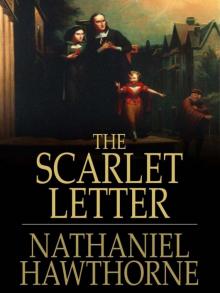 The Scarlet Letter
The Scarlet Letter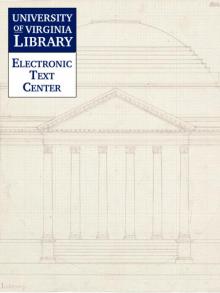 Young Goodman Brown : By Nathaniel Hawthorne - Illustrated
Young Goodman Brown : By Nathaniel Hawthorne - Illustrated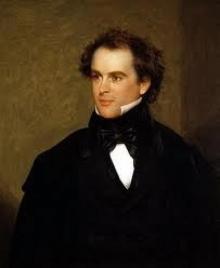 The Birthmark
The Birthmark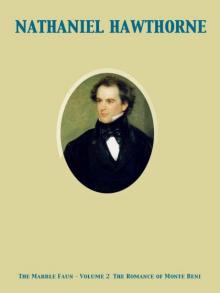 The Marble Faun; Or, The Romance of Monte Beni - Volume 1
The Marble Faun; Or, The Romance of Monte Beni - Volume 1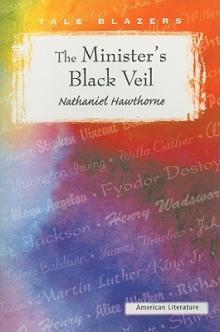 The Minister's Black Veil
The Minister's Black Veil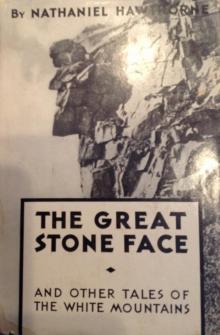 The Great Stone Face, and Other Tales of the White Mountains
The Great Stone Face, and Other Tales of the White Mountains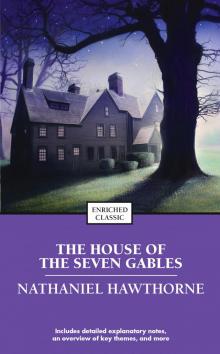 The House of the Seven Gables
The House of the Seven Gables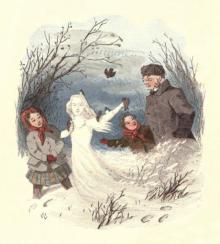 The Snow Image
The Snow Image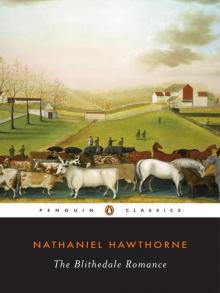 The Blithedale Romance
The Blithedale Romance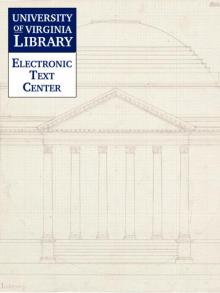 Rappaccini's Daughter: By Nathaniel Hawthorne - Illustrated
Rappaccini's Daughter: By Nathaniel Hawthorne - Illustrated Twice-Told Tales
Twice-Told Tales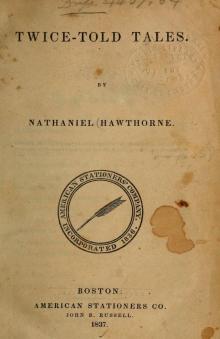 Twice Told Tales
Twice Told Tales The Marble Faun; Or, The Romance of Monte Beni - Volume 2
The Marble Faun; Or, The Romance of Monte Beni - Volume 2_preview.jpg) Footprints on the Sea-Shore (From Twice Told Tales)
Footprints on the Sea-Shore (From Twice Told Tales) Main Street
Main Street_preview.jpg) The Seven Vagabonds (From Twice Told Tales)
The Seven Vagabonds (From Twice Told Tales) Fanshawe
Fanshawe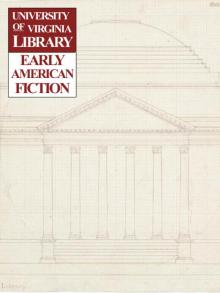 Chippings with a Chisel
Chippings with a Chisel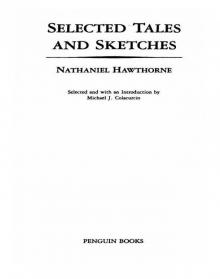 Selected Tales and Sketches
Selected Tales and Sketches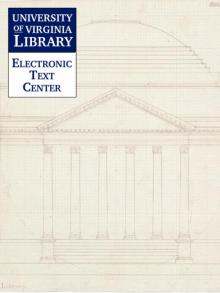 Young Goodman Brown
Young Goodman Brown Roger Malvin's Burial
Roger Malvin's Burial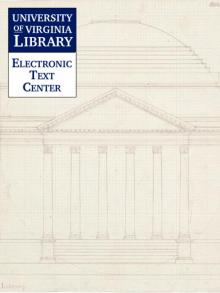 The Prophetic Pictures
The Prophetic Pictures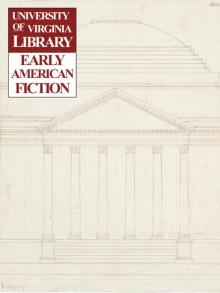 The Village Uncle
The Village Uncle Scarlet Letter (Barnes & Noble Classics Series)
Scarlet Letter (Barnes & Noble Classics Series)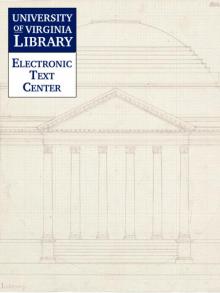 The Procession of Life
The Procession of Life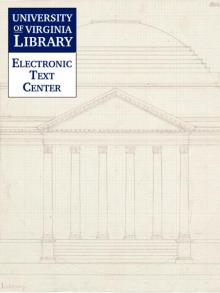 Drowne's Wooden Image
Drowne's Wooden Image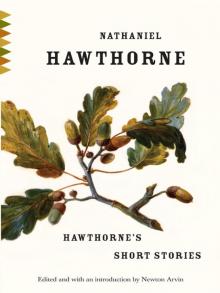 Hawthorne's Short Stories
Hawthorne's Short Stories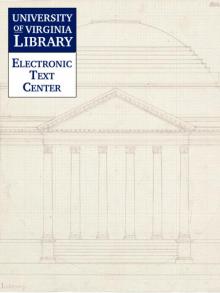 My Kinsman, Major Molineux
My Kinsman, Major Molineux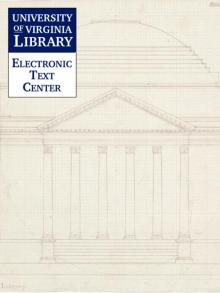 Legends of the Province House
Legends of the Province House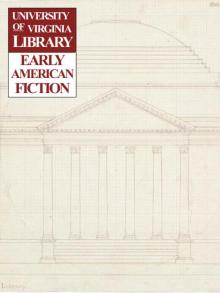 Foot-Prints on the Sea-Shore
Foot-Prints on the Sea-Shore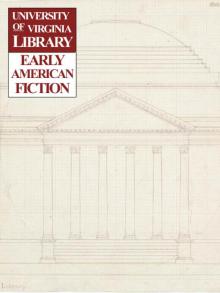 The Haunted Quack
The Haunted Quack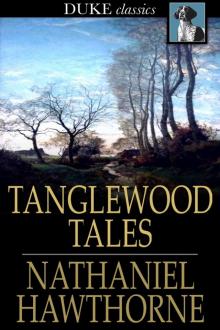 Tanglewood Tales
Tanglewood Tales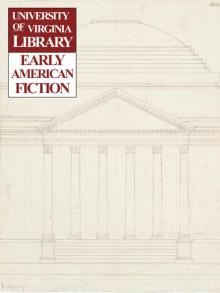 The Seven Vagabonds
The Seven Vagabonds Mosses from an Old Manse, Volume 2
Mosses from an Old Manse, Volume 2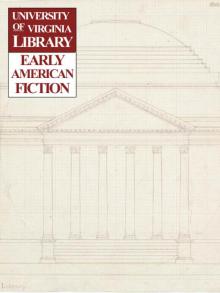 The Canterbury Pilgrims
The Canterbury Pilgrims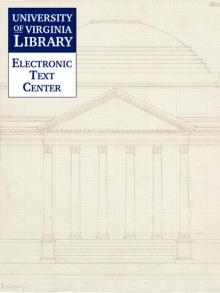 Wakefield
Wakefield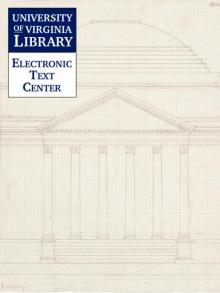 The Gray Champion
The Gray Champion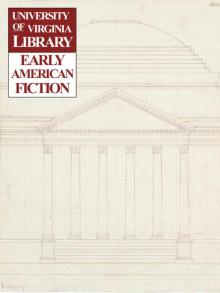 The White Old Maid
The White Old Maid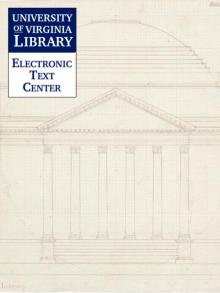 The Snow-Image: A Childish Miracle
The Snow-Image: A Childish Miracle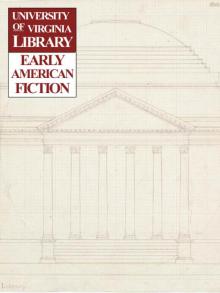 The Gentle Boy
The Gentle Boy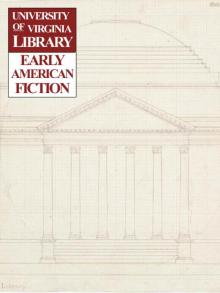 Mr. Higginbotham's Catastrophe
Mr. Higginbotham's Catastrophe![The Threefold Destiny: A Fairy Legend, by Ashley Allen Royce [pseud.] Read online](http://i1.bookreadfree.com/i2/04/10/the_threefold_destiny_a_fairy_legend_by_ashley_allen_royce_pseud__preview.jpg) The Threefold Destiny: A Fairy Legend, by Ashley Allen Royce [pseud.]
The Threefold Destiny: A Fairy Legend, by Ashley Allen Royce [pseud.]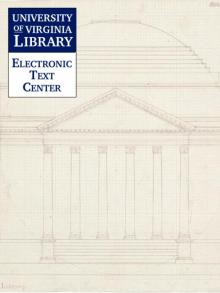 Lady Eleanore`s Mantle
Lady Eleanore`s Mantle The Great Carbuncle
The Great Carbuncle The Portable Hawthorne (Penguin Classics)
The Portable Hawthorne (Penguin Classics)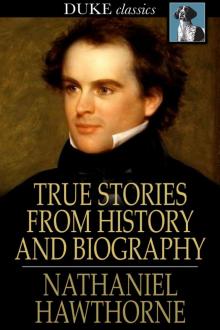 True Stories from History and Biography
True Stories from History and Biography